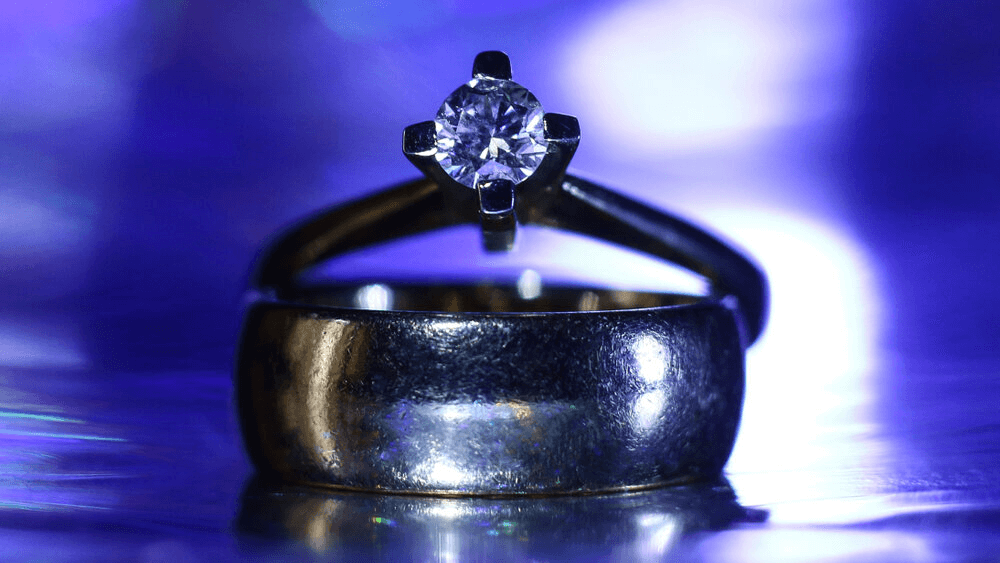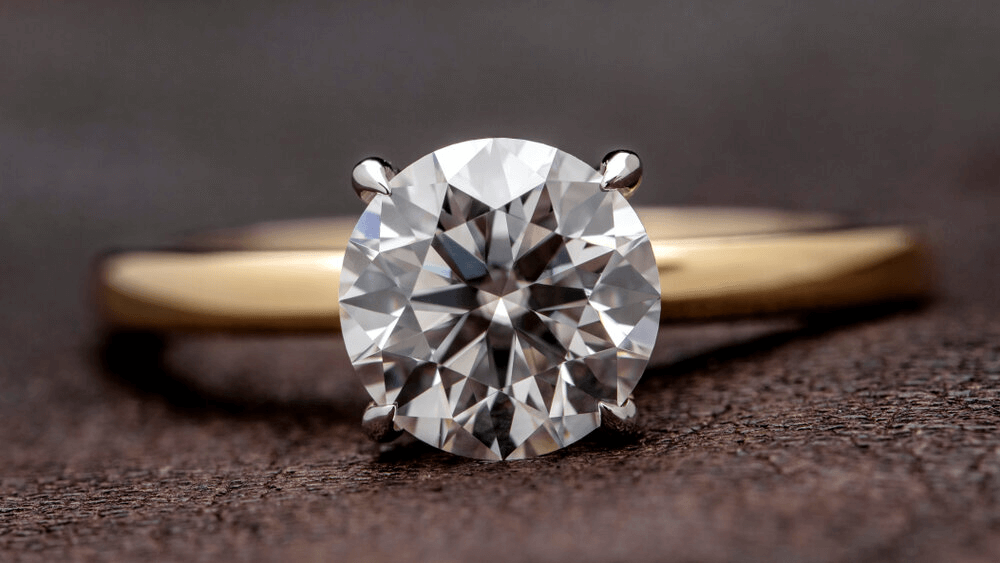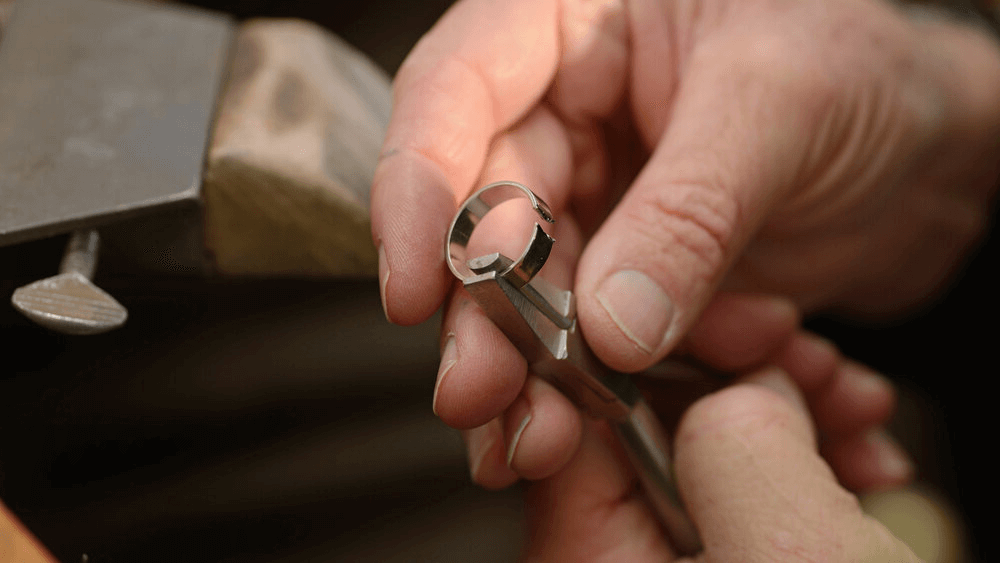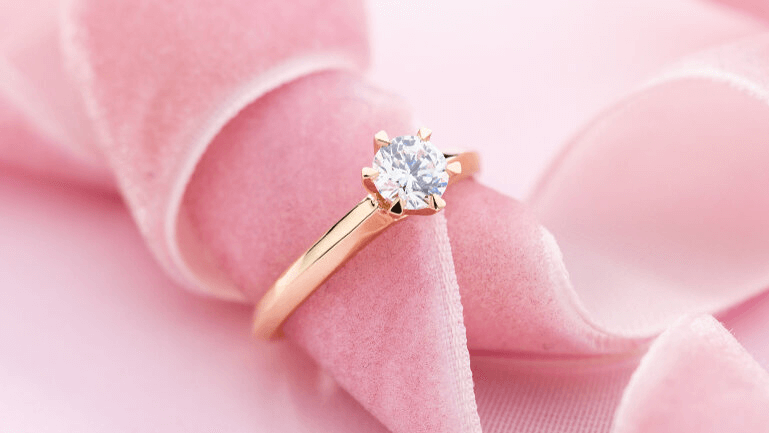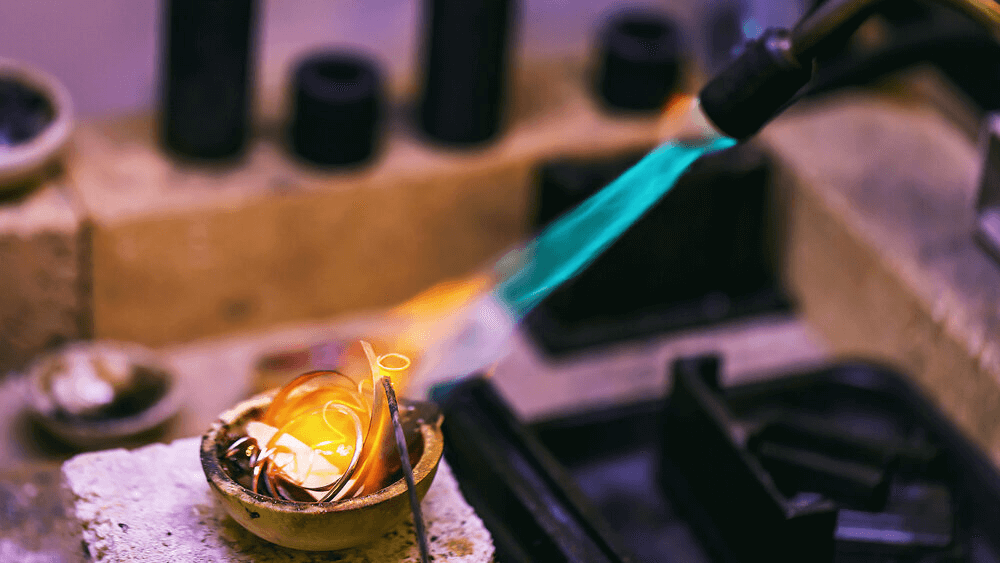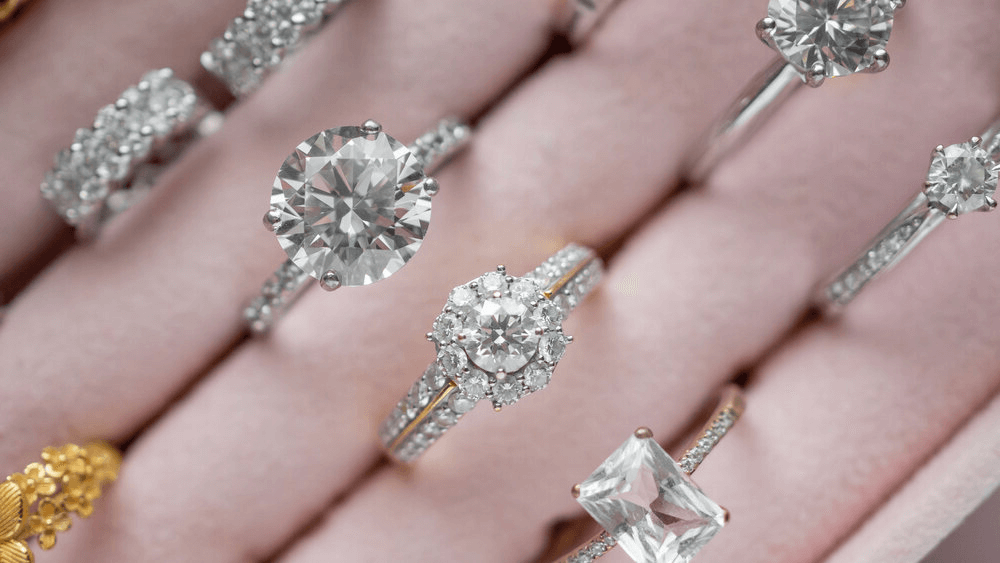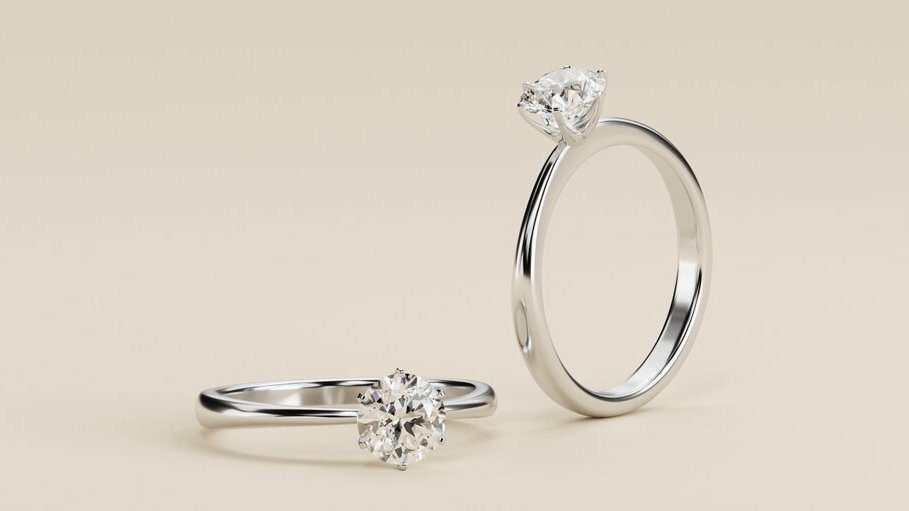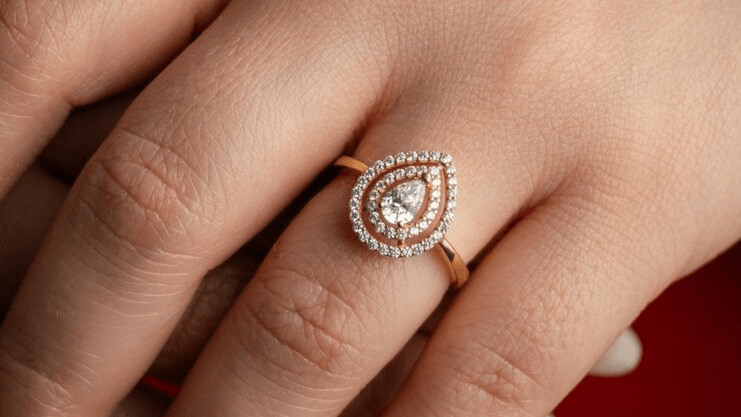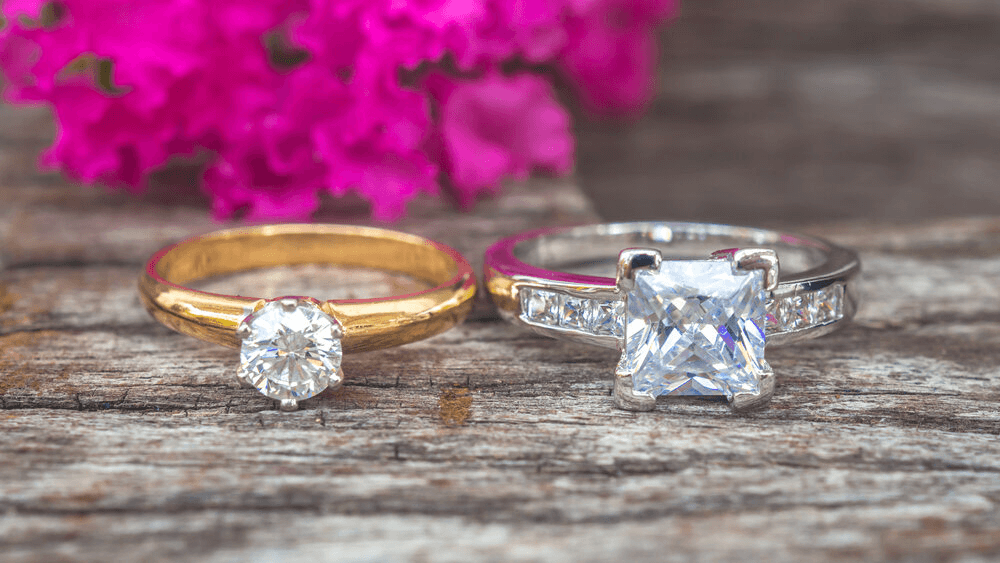Rhodium Plating Hacks for Dazzling Jewelry

By Gary A.

Edited by Olivia H.
Published Aug 13, 2024
Edited on Mar 31, 2025
Rhodium plating can make or break a ring’s impact, depending on the vibe you’re going for.

Navigate this guide:
- 6 Quick Tips if You’re Considering Rhodium Plating
- Introduction to Rhodium Plating
- The Science Behind Rhodium Plating
- Our Expert Take
- 10 Frequently Asked Questions About Rhodium Plating
Before we dive deeper into the specifics of Rhodium Plating, here are some practical tips to help guide your decision-making process.
6 Quick Tips if You’re Considering Rhodium Plating
Tip 1: Understand the Metal Base:
- Before considering the rhodium plating, it’s essential to know the base metal of the ring. Common metals include white gold, yellow gold, platinum, and silver. The choice of base metal can affect the ring’s durability, color, and price.
Tip 2: Thickness of Rhodium Plating:
- The thickness of the rhodium plating can influence its longevity. A very thin layer might wear off quickly, especially on rings worn daily. However, a layer that’s too thick can make the rhodium brittle and prone to cracking. Ideally, the plating should be between 0.75 to 1.0 microns for optimal durability and appearance.
Tip 3: Replating Considerations:
- Rhodium plating doesn’t last forever. Depending on wear and exposure to chemicals, a rhodium-plated ring might need replating every 12 to 24 months. It’s essential to factor in the cost and convenience of replating when choosing a rhodium-plated ring.
Tip 4: Allergic Reactions:
- One of the benefits of rhodium plating is its hypoallergenic nature. However, if the base metal contains allergens like nickel, and the rhodium plating wears off, it might cause allergic reactions. Ensure that the base metal is also suitable for sensitive skin if this is a concern.
Tip 5: Appearance Over Time:
- As rhodium plating wears off, the base metal’s color will start to show through. For instance, a yellow gold ring with rhodium plating will begin to display a yellowish tint as the plating wears. It’s essential to be aware of this gradual change in appearance.
Tip 6: Cost Implications:
- Rhodium is a precious metal, and its addition to a ring can increase the overall cost. Moreover, the recurring cost of replating should also be considered in the total expense over the ring’s lifetime.
Now that you’ve got these practical tips, use Jeweler AI below to find the perfect engagement ring that suits your style and budget:
Introduction to Rhodium Plating
So, you’re diving into the world of engagement rings, and suddenly you hear about this thing called rhodium plating. Don’t worry if you’re scratching your head – it’s not exactly everyday conversation material. But stick with me, because this little-known process is making waves in the jewelry world, and for good reason.
What is Rhodium Plating?
Let’s kick things off with the basics. Rhodium is a precious metal that’s part of the platinum family. Now, when I say precious, I mean it – this stuff is rarer than gold and platinum, with a price tag to match. But here’s the kicker: jewelers aren’t using it to craft entire rings. Instead, they’re using it as a plating material, giving other metals a finish that’s so brilliantly white it’ll make your eyes pop.
Think of rhodium plating as giving your jewelry a fancy white coat. It’s applied as a thin layer over other metals, most commonly white gold. The result? A dazzling, mirror-like finish that’ll make your ring sparkle like it’s fresh off a Hollywood red carpet. It’s not just about looks, though – this stuff is tough as nails too.
Why Choose Rhodium Plating for Your Engagement Ring
First off, it’s all about that shine. Rhodium gives your ring a brightness that’s hard to achieve with other metals. It’s like turning the contrast up on your TV – everything just pops more. If you want a ring that catches the light (and everyone’s attention), rhodium plating is your new best friend.
Secondly, this stuff is tough. Rhodium is more durable than gold, which means it’ll help your ring stand up to daily wear and tear. Let’s face it, engagement rings go through a lot – from dish soap to accidental knocks. A little extra durability goes a long way.
And for those of you with sensitive skin, listen up: rhodium is hypoallergenic. If gold makes you itchy (and trust me, that’s not the feeling you want associated with your engagement ring), rhodium plating could be your saving grace.
Lastly, it’s a great way to revitalize older jewelry. Got a family heirloom that’s lost its luster? A rhodium plating can make it look brand spanking new. It’s like a time machine for your jewelry box.
The Science Behind Rhodium Plating
Alright, let’s get our geek on for a minute and dive into the science behind this magical process. Don’t worry, I promise to keep it interesting – no periodic table memorization required.
The Rhodium Plating Process Explained
Rhodium plating isn’t just dunking your ring in a vat of liquid metal (though that would be pretty cool to watch). It’s a precise process that involves electricity and some fancy chemistry. It’s like a day spa treatment for your jewelry but with more science and fewer cucumbers on the eyes.
First, the jewelry gets a deep clean. We’re talking spotless because even the tiniest speck of dirt can mess up the plating. It’s like prepping a wall before painting – the cleaner the surface, the better the result.
Then, it’s dipped in a rhodium solution. Here’s where the magic happens – an electric current is passed through the solution, causing the rhodium particles to stick to the jewelry’s surface. It’s like the jewelry is a magnet, and the rhodium particles are irresistibly drawn to it.
The whole process takes only a few minutes, but the results can last for years with proper care. It’s like a time-lapse transformation for your jewelry – blink, and suddenly your ring is gleaming like never before.
Advantages of Rhodium Plating
We’ve touched on some perks, but let’s really break it down:
1. Unbeatable shine: Rhodium has a white, reflective surface that outshines even platinum. It’s like your ring is constantly catching the perfect light.
2. Durability: It’s harder than gold and resists scratches better. Think of it as a protective shield for your precious jewelry.
3. Versatility: It can be applied to most metals, making it a flexible option for various jewelry types. It’s the Swiss Army knife of jewelry finishes.
4. Hypoallergenic: Great for sensitive skin that reacts to other metals. No more sneaky rashes or itchy fingers!
5. Value for money: It gives the look of more expensive metals at a fraction of the cost. It’s like getting a first-class upgrade for an economy price.
Remember, while rhodium plating is fantastic, it’s not a permanent solution. Like any good thing, it needs a little TLC to keep it looking its best. But with the right care, your rhodium-plated ring can keep dazzling for years to come. It’s an investment in your ring’s future, ensuring it stays as bright and beautiful as the day you first slipped it on.
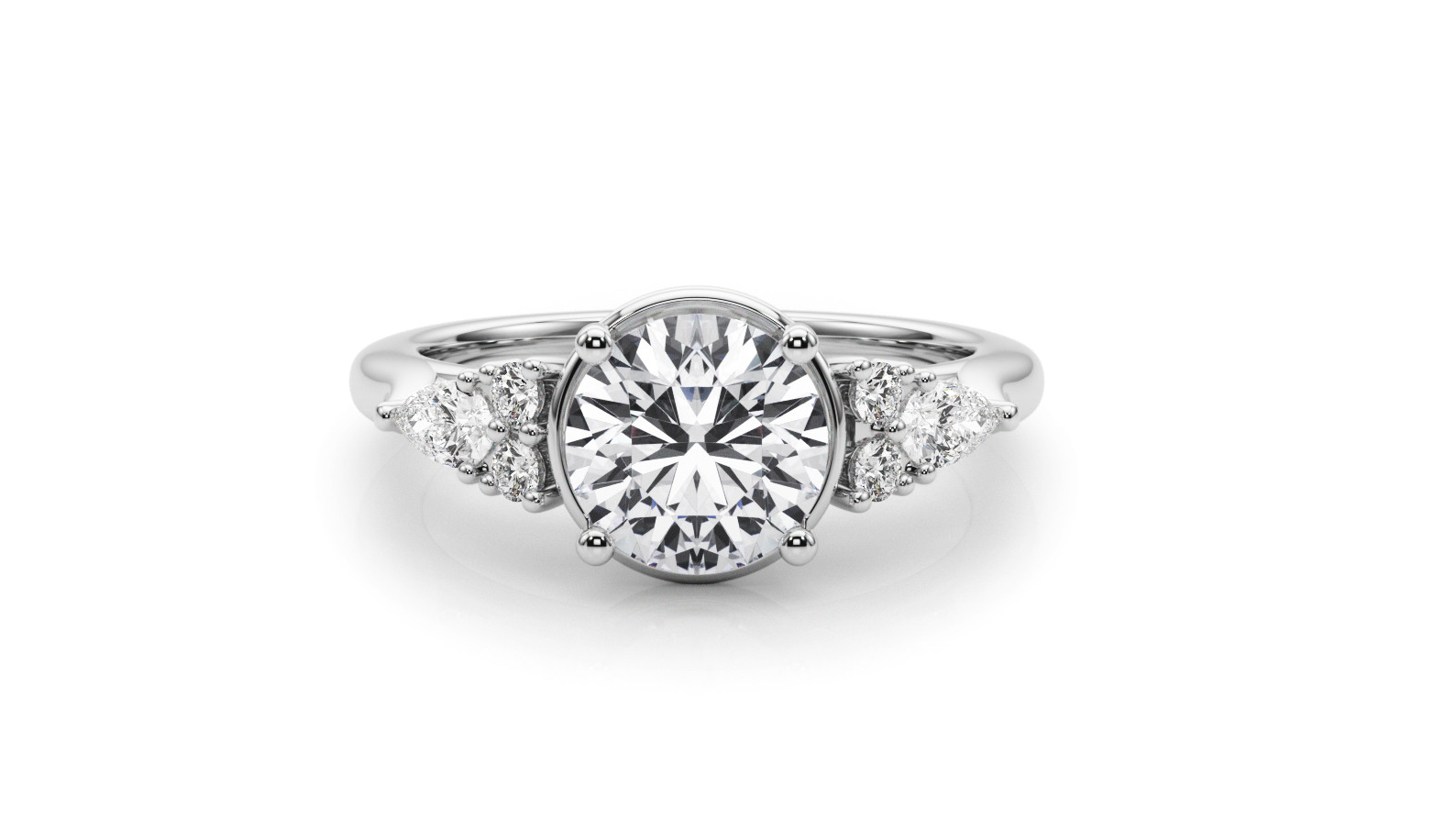
Our Expert Take
Rhodium plating is like giving your ring a superpower – unbeatable shine, added durability, and the ability to make your diamond look even more spectacular than it already is. And the best part? It does all this without forcing you to break open your piggy bank and empty it completely.
Remember, at the end of the day, your engagement ring is more than just a pretty piece of jewelry. It’s a symbol of your love, your commitment, and the exciting journey you’re about to embark on. Whether you go for rhodium plating or not, the most important thing is choosing a ring that speaks to you and your partner.
10 Frequently Asked Questions About Rhodium Plating
- Q: What is Rhodium Plating?
- A: Rhodium plating is a process of coating jewelry with a layer of rhodium, a precious metal known for its exceptional brightness and durability. It enhances the jewelry’s appearance, making it more reflective and resistant to scratches and tarnishing.
- Q: How Long Does Rhodium Plating Last?
- A: The lifespan of rhodium plating varies based on the wear and care of the jewelry. On average, it can last between 12 to 24 months before needing replating, but daily-worn items may require more frequent attention.
- Q: How Much Does Rhodium Plating Cost?
- A: The cost of rhodium plating can range from $60 to $150 for a ring, depending on the size of the piece and the jeweler’s pricing. Prices may vary for other types of jewelry or in different regions.
- Q: Can Rhodium Plating Wear Off?
- A: Yes, rhodium plating can wear off over time, especially with frequent wear and exposure to harsh chemicals. The underlying metal will become visible, necessitating replating to restore the item’s original appearance.
- Q: Is Rhodium Plating Safe for Sensitive Skin?
- A: Rhodium plating is hypoallergenic and considered safe for sensitive skin. It provides a barrier between the skin and the base metal of the jewelry, which may contain allergens like nickel.
- Q: Can Rhodium Plating Be Removed?
- A: Yes, rhodium plating can be professionally removed by a jeweler. This process involves polishing the jewelry to strip away the rhodium layer, revealing the original metal beneath.
- Q: Does Rhodium Plating Change the Color of the Jewelry?
- A: Rhodium plating can alter the color of jewelry by giving it a brighter, more reflective white finish. If applied over yellow gold, it will change the appearance to that of white gold or platinum.
- Q: How Do You Care for Rhodium-Plated Jewelry?
- A: To prolong the life of rhodium-plated jewelry, avoid exposing it to harsh chemicals, remove it during physical activities, and store it separately to prevent scratches. Cleaning should be done with a soft, dry cloth.
- Q: Can All Metals Be Rhodium Plated?
- A: While most metals can be rhodium plated, the process is most commonly used on silver, white gold, and platinum. Rhodium plating on other base metals like copper or brass is less common due to cost and durability considerations.
- Q: How Can You Tell if Jewelry is Rhodium Plated?
- A: Rhodium-plated jewelry has a distinctive bright white finish that is more reflective than uncoated metals. A jeweler can also confirm if an item is rhodium plated through inspection.
Discover the perfect shine with Jeweler AI‘s rhodium-plated rings. Begin your journey to sparkle!
FOLLOW-UP GUIDE SERIES

